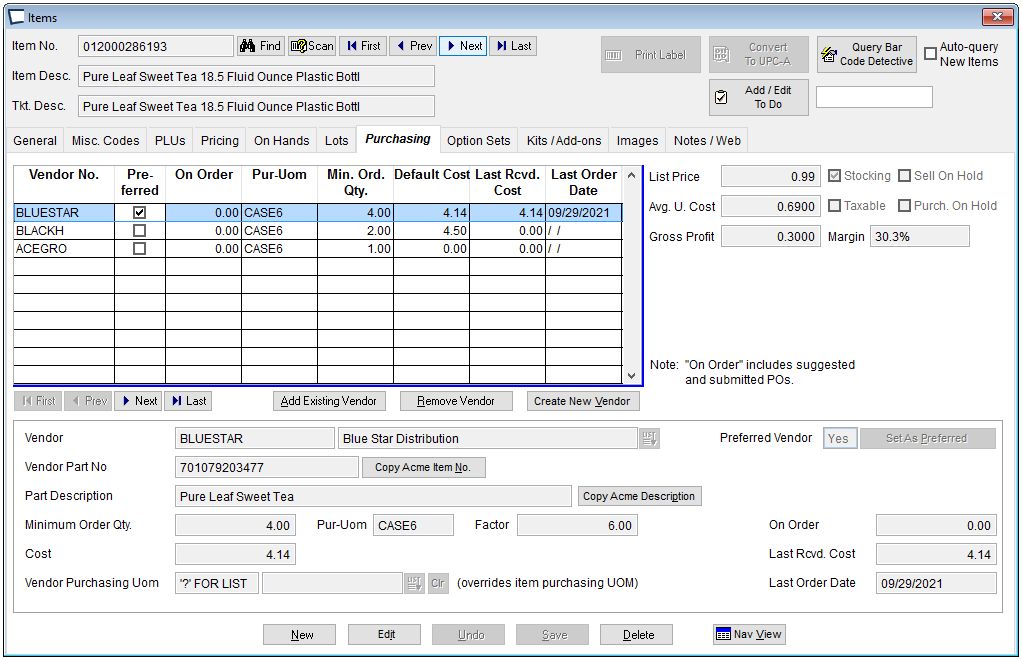Click >Inventory >Items >Purchasing Tab
If the purchasing tab is not active check the setting on >Maintenance >Acme Setup Information > Store Info Tab

In a store copy of Acme the tab shows information for the store only, to see location details click on the location tab. |
Add Existing Vendor / Remove Vendor -Associate or disassociate a vendor with this item.
|
Create New Vendor -Add a new vendor to Acme and associate them with this item.
Set as Preferred (Vendor) Flag your preferred vendor for this item. This flag can be used during creation of purchasing worksheets to limit the list of items added to the worksheet. The reasons may vary by item; price, availability, rebates etc. This can also be set automatically, inquire for details.
|
Vendor Part Number -enter the Vendor's Part Number or click the button to copy the Acme Item Number. Using Vendor Part Numbers when placing orders can increase accuracy, but make sure to validate units of measure!
Part Description - enter the Vendor Description for this part or use the button to copy the Acme Description.
Copy Acme Item Number - copies the Item Number to the Vendor Part Number field, since they are often the same value.
Add as PLU - Adds a PLU that has same value as the Vendor Part Number. This can be handy for a number of reasons, for example if you want to use the Acme mobile app or portable data collector to scan vendor part numbers during PO Receiving or entering a sale/return.
Copy Acme Description - copies the Item Description to the Vendor Description field.
Minimum Order Qty -Minimum you are required to buy from the selected vendor. Uses the Purchasing Unit of Measure from the General tab unless you enter an override below. If nothing is entered the minimum is assumed to be 1.
|
Default Cost -Vendor "catalog" cost for the purchasing unit of measure from the selected vendor. This is used as suggested cost on new purchase orders. If you want last cost or last cost if higher popped into Default Cost this is available via utility. inquire for details.
If this is 0.00, and you enter another value during Purchase Order creation, that value will replace the 0.00.
If you enter a new cost and the resulting unit cost differs from existing Average Unit Cost by more than 10% a message will display a pop up message. This logic helps head off problems where user accidentally enters cost EACH instead of case cost.

Vendor Purchasing UOM -overrides the Purchasing Unit of Measure entered on the Item General tab.
On Order -The number currently on Acme Suggested and Submitted Purchase Orders.
Last Rcv'd. Cost -the last cost the vendor charged you for the purchasing UOM of the item, a case of 6 in the screen-shot above.
Last Order Date -the date of the last suggested or submitted purchase order for this item from each vendor. -Voided orders are not included.
Avg Unit Cost -The average cost for the stocking unit of measure, "each" in the example. This is calculated automatically by the system and displayed on screen top right corner.
Related Topics
